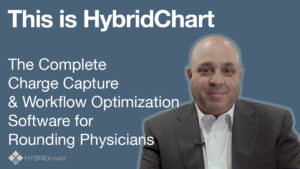Hospital readmissions are bad for patients, but they’re also a costly affair. According to the Kaiser Family Foundation analysis of CMS final rules and impact files, hospitals paid an estimated $528 million dollars in penalties for fiscal year 2017. That’s almost $100 million more than fiscal year 2016 – even though hospital readmissions have been steadily declining since 2012.
Part of the reason for this increase is that CMS is penalizing readmissions for more conditions. In 2013 and 2014, there were three: heart failure, pneumonia, and heart attack. By 2017, the list grew to include more types of pneumonia, post CABG, COPD, and hip/knee replacements.
With that in mind, how can you keep your patients out of the hospital? Here are five strategies to help you accomplish this goal:
Be sure your patients understand. Being in the hospital can be overwhelming. When giving the patient discharge instructions, consider having the patient or their caregivers explain back what they can expect and how they should care for themselves once home.
Provide Online Resource Recommendations. Printed instructions are great, but what happens when patients need or want more information? Often, they go straight to the Internet – where they may find misleading, inappropriate, or downright scary information. Be proactive about this probability and suggest legitimate online sources where they can find information at their level of understanding.
Ensure Access to Medication. Medication compliance can be essential to recovery, but what happens when a patient can’t afford what you prescribe? Consider the patient’s insurance coverage before prescribing outpatient medications. That new, novel drug can’t actually help a patient who can’t afford to buy it. Additionally, consider sending the patient home with a small supply of medication to get them started, so they aren’t trying to manage getting home and filling a prescription on the same day.
Track High Risk Patients. Consider your practice. What are the highest risk patients you see? Utilizing a smart, data-gathering tool to help you easily identify those patients can be invaluable to ensuring that they are receiving timely outpatient follow up and treatment.
Be Proactive About Outpatient Follow Up. How long do patients wait on hold when calling for an appointment at your practice? Is your office phone number buried somewhere in a stack of discharge instructions? Consider a tool that allows you to alert the office of patient follow up needs so that they can contact the patient and get them scheduled. Alternatively, secure messaging platforms that connect you to the office can allow you to schedule patient follow ups before they even leave the hospital.
HybridChart can help you reduce hospital readmissions. Schedule a live demo today.







